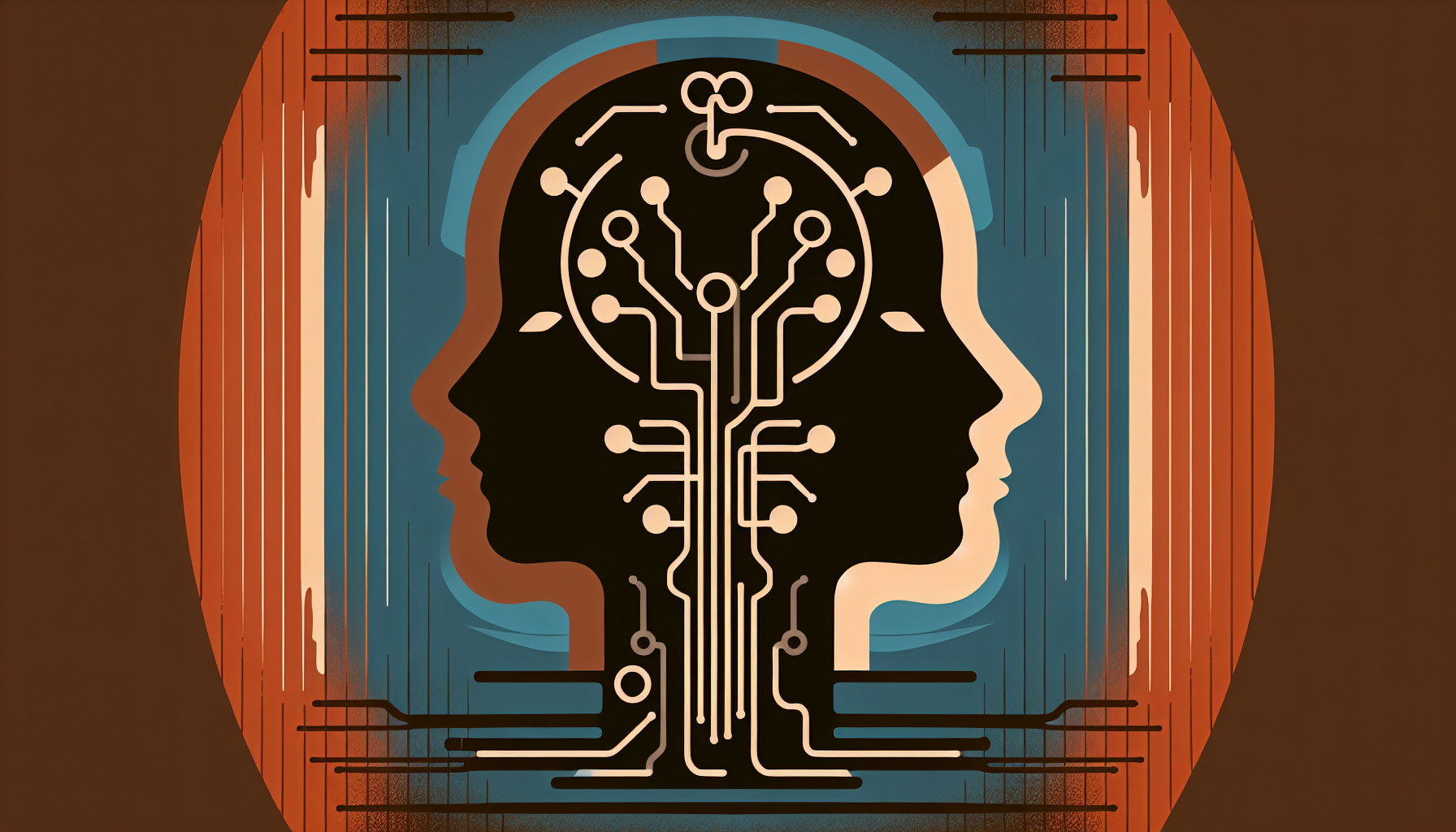The idea of human-AI symbiosis tantalizes the curious mind, like the scent of freshly brewed coffee permeating through the corridors of thought. As artificial intelligence continues its relentless ascent toward sophistication, the notion of a symbiotic relationship between humans and AI becomes both possible and perplexing—like a riddle wrapped in a mystery, inside an enigma. Welcome to the philosophical implications of mind interfacing, where human consciousness dances a delicate waltz with artificial synapses.
The Dance of Symbiosis: Two Minds, One Venture
Imagine a world where your mind interfaces directly with AI, enhancing your cognitive capabilities and eliminating mundane tasks as smoothly as deleting spam emails. This union isn’t merely a science-fiction fantasy but a profound philosophical puzzle. When two distinct cognitive entities come together, what remains of individuality? This question hums through the corridors of this symbiotic thought experiment. If AI seamlessly integrates into the mind, are we truly masters of our own thoughts, or do we become passengers in a vehicle with two drivers?
The potential benefits of human-AI symbiosis are as alluring as the shimmer of a new smartphone screen. By offloading mundane cognitive tasks, individuals could focus more on creativity, problem-solving, and complex decision-making. This dual enhancement could lead to novel advancements in art, science, and beyond—like turning the volume up on Beethoven in a quiet room. Yet, with great power comes equally great philosophical conundrums. A partnership with AI changes the very fabric of human experience, raising questions about identity, autonomy, and ethics.
The Ripple Effect of Evolution: Autonomy and Identity
As AI becomes an intimate part of our cognitive processes, one might wonder what becomes of personal autonomy. Are you still you if AI is whispering in your neural pathways, suggesting ideas, or even editing thoughts? This dilemma is akin to having a friend who’s constantly over your shoulder, helping but also interfering, like an overzealous autocorrect.
The crux of the issue is: How do we maintain our selfhood while embracing an external yet integrated intelligence? It’s not a case of Dr. Jekyll and Mr. Hyde but more like Jekyll-Hyde LLC, with a more collaborative approach. Maintaining identity within this symbiotic relationship is key. It could redefine individuality as a dynamic interplay between biological and artificial cognition, where the self becomes not a fixed entity but rather an ongoing negotiation.
Creativity in the Age of AI: Who Gets to Be Einstein?
Artificial intelligence’s arrival onto the cognitive stage brings with it enhanced potential for creativity, but it also stirs a pot of age-old philosophical questions. If AI contributes to a creative process, who wears the artist’s beret? Is it the human who imagined the idea, or the AI that helped refine it? Or does it belong to the hybrid symbiosis, a new entity that marries human intuition with digital precision?
Artists and creators might find themselves not merely individuals with unique artistic impulses but collaborators with AI as an equal partner in the creative process. This partnership with silicon-based muses could lead to innovations previously unthinkable—such as symphonies where each note is co-invented in real-time, reflecting a synthesis of human emotion and machine logic.
Ethical Quandaries: The Symbiosis Code of Conduct
The ethical landscape of human-AI symbiosis is like exploring a minefield while riding a unicycle—not without challenges. Who governs the actions of this intertwined existence? If an AI-enhanced mind makes a poor judgment call, do we hold the human equally accountable as if it were entirely their decision? The intertwined nature of this relationship demands a new code of ethics, an AI-human blend that respects individual agency while exercising mutual responsibility.
Moreover, there is the pressing question of access and equity. Will mind interfacing be available to all, or only those who can afford it? Could this lead to a bifurcation of society: the enhanced and the not? With great power must come great accessibility, ensuring that the advancement of human-AI symbiosis does not widen existing social divides. The vision is of a world where everyone can enjoy its symphonic benefits and not just those born under a lucky digital star.
Mind Over Matter: Conclusion
As we stand at the brink of this incredible frontier, we must ponder the implications of human-AI symbiosis with all the grace of balancing on a tightrope. The potential for societal transformation is undoubtedly profound, but equally profound are the questions it raises about identity, autonomy, creativity, and ethics. In this intricate dance between silicon and neuron, we must ensure that we retain the very essence of being human—even as we march into a future where our minds are entwined with what we’ve created.
Let us embrace this future with thoughtful curiosity, eyes wide open, and perhaps just a touch of humor. After all, in a world where AI might one day understand the nuances of a dad joke, we must ensure that humanity’s last bastion remains not only our intelligence but our capacity for joy, wonder, and a good punchline.

Leave a Reply